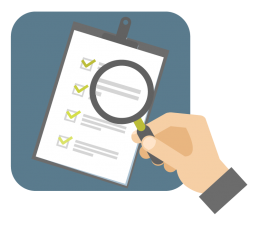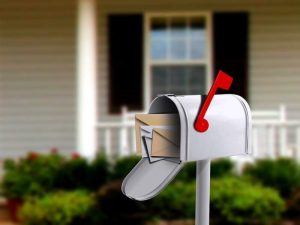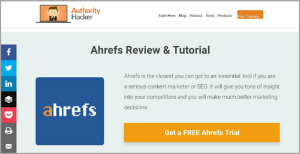
If you’re promoting a product, service, event, webinar, or must-have resource, just create a landing page and watch the conversions roll in, right? Unfortunately, it’s not that simple. One small mistake can be costing you—in leads and in dollars.
Landing pages are a linchpin moment for your product or service: the make-or-break moment where a customer decides whether or not your brand is worth the investment.
Landing pages are a linchpin moment for your product or service: the make-or-break opportunity where a customer decides whether or not your brand is worth the investment.
With such a brief window of opportunity—and a small amount of text—the pressure is on.
Nielsen findings cited in a Forbes article on the Influencers of a Buyer’s Journey indicate that consumers are 5x more dependent on content than they were 5 years ago. One small mistake can indeed be costly.
The pressure is on
Making it even more challenging, Even the most gifted writer might fail at crafting landing page copy. Why?
Because conversion writing is a whole different animal.
Instead of just focusing on word choice and rhythm, poetry and prose, you have a job to do: To win a conversion, and in only a few seconds’ time. It’s a game where every word counts.
Your message must be succinct, logical, trustworthy, and potent. More importantly, your message must compel the reader to take action. It’s a lot of pressure.
What do the winners teach us?
 Building winning landing pages is an art, a science, and an ongoing effort to understand how your audience will respond. Getting your customer to convert requires an understanding of the individual making the decision, an ability to propose a compelling offer, and the editing skills of a ninja.
Building winning landing pages is an art, a science, and an ongoing effort to understand how your audience will respond. Getting your customer to convert requires an understanding of the individual making the decision, an ability to propose a compelling offer, and the editing skills of a ninja.
Luckily, the web community has shared A/B, split, and multi-variate test results that allow us to put our best foot forward. By reviewing winning words from landing page tests, we find a hidden set of copy guidelines and principles to use as we craft landing page copy. And here they are:
Winning word: ‘You / Your’
‘You’ is known to be the number one most persuasive and influential words in our language. Instead of cruising on autopilot, we naturally become more engaged when we are addressed directly.
Lesson 1: Make it Personal
While a landing page is a digital experience, there’s still a human being on the other side, deciding whether or not to click. And A/B tests prove the humanity: results indicate that creating a personal connection resonates with customers.
How to incorporate this into your page:
Keep the content directed toward the user at all times. Address the visitor, using words like “you” and “your”. Speak to the individual experience of the user, ask a question, and frame your message around how he or she will benefit from your product or service.
Winning word: ‘My’
Once again keeping the copy personal, this next word shows us a new concept to consider. Adding ‘my’ in button text has increased conversion. Instead of a button that reads, “ Download the Guide”, use the phrasing, “Download My Guide.” This is a stealth, advanced maneuver in two ways: 1) The term ‘my’ makes the text personal, and 2) It helps the reader imagine the benefit he or she will receive.
Lesson 2: Focus on the Future
What benefits will the customer experience with this new item? Communicate this clearly. Adding ‘my’ to the button text is a solid start, but the content itself should focus on the benefits of the item you’re promoting. In such a brief opportunity and a small amount of text, you need to make sure you there is no question as to what they’ll gain by trying your product or service. Can you nail your value proposition in single, compelling, concrete sentence?
How to incorporate this into your page:
In addition to developing a button text phrase that includes ‘my’, frame the page copy around the positive outcome this product or service will provide. Have a list of benefits handy, and work these into the copy. Benefits can be a straightforward bullet-point item, or you can help create more shape by communicating the improved future they will experience with this new product, service, subscription, etc.
Winning words: Digits and quantifiers
A majority of A/B tests study the impact of color, design, image, or entire sections of content. It’s not as easy to find specific words that move the needle. But in this study, an author changed one bullet point on a landing page to drive downloads to his ebook. What changed? The bullet included how long it would take to read the ebook:
Original version
“Insights and experience from 4 years of research and over 350 A/B tests distilled into one 26-page free ebook”
Edited bullet text
“Read the book in just 25 minutes and get insights from 4 years of research and over 350 A/B tests”
The result? The edited version, which included how long it will take to read the book, outperformed the control group by 18.59%.
Lesson 3: Define the Scope
Including digits in blog post headlines is known to have a higher number of views compared to those that don’t. Why? Because readers have a better understanding of what they’re getting into when they click. Instead of a vague message, the reader has a scope and a framework on what he or she is about to read. It’s concrete. Clarifying the scope is helpful to readers and—as the results indicate—drives higher conversions.
How to incorporate this into your page:
Frame the scope with a quantifier, such as the time it will take, number of steps, reasons, ideas, examples, tips, etc. Here are a few ideas to get you started:
- 6 tips to create better pitch decks
- 5 minutes to a more organized week
- 3 reasons why you need to check on your 401k
- 7 examples of great web campaigns
 Once you’ve crafted your text, run back through this checklist to make sure you’ve addressed the guidelines outlined above:
Once you’ve crafted your text, run back through this checklist to make sure you’ve addressed the guidelines outlined above:
- Benefits in action
- Tangible, descriptive button text
- Use of “my” where possible, in the button text
- Use of you / your
- Quantify the scope
Want to make writing landing page copy easier? The Piipeline Playbook takes this further, featuring more landing page copy tools including this checklist, how to add them throughout your page, as well as a list of the most influential words in the English language. Sign up for the Piipeline Playbook for immediate access.
A rule of thumb when creating conversion experiences such as landing pages? It’s a human behind the screen, making the decision. Conversions are a result of behavior, decision-making, and human connection. I don’t call this marketing, I call it anthropology—and I hope you’ll check out a few more posts so I can show you how anthropology can improve your customer experiences.
Digital & Social Articles on Business 2 Community(138)
Report Post








